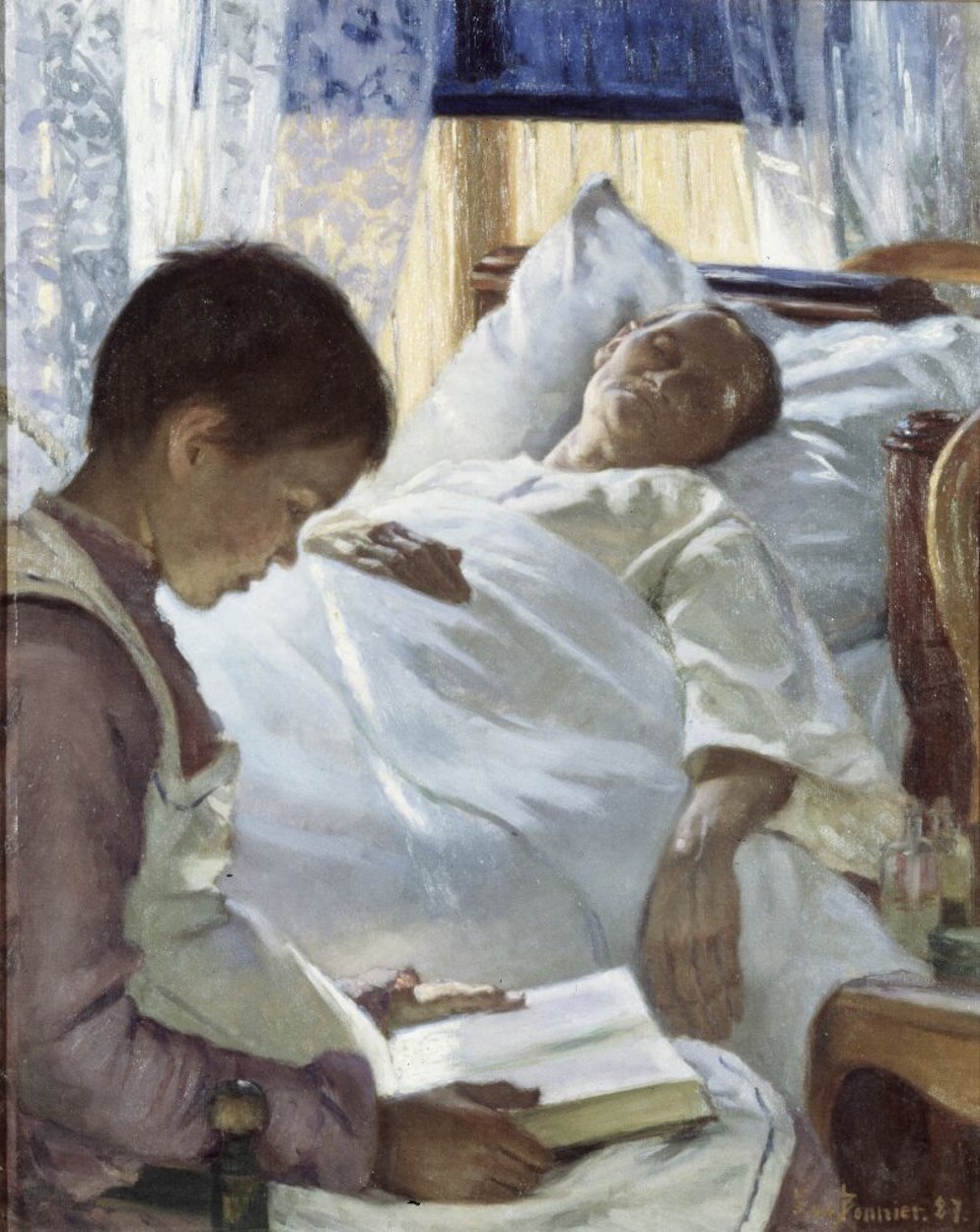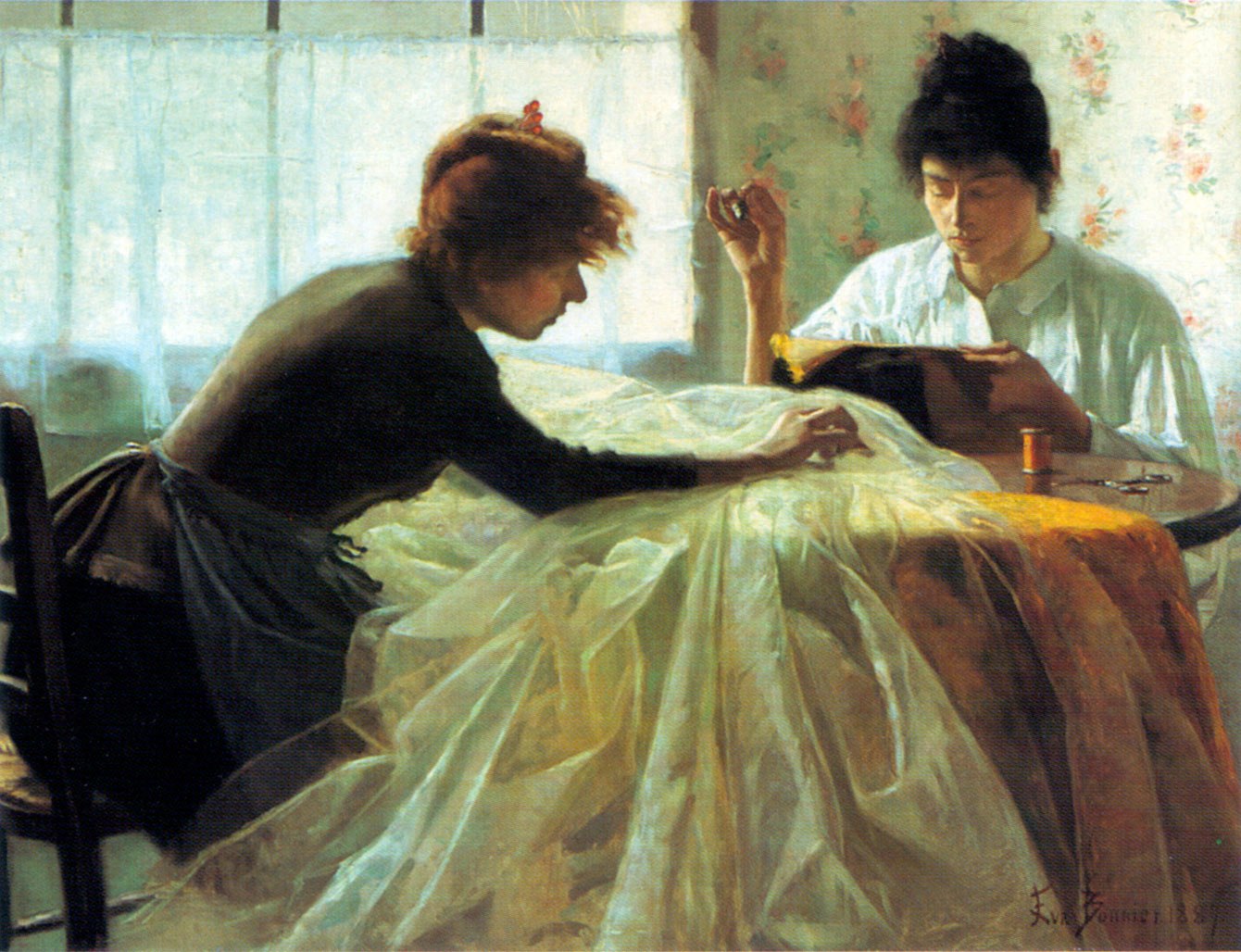Eva Bonnier’s depictions of terminal illness bring us a pared-down everyday perspective, with the artist challenging the stereotypical female bourgeois ideal of the time. Women are presented as subjects with strong integrity and not as fragile objects. In Reflection in Blue, from 1887, the figures are painted from a realistic perspective, placing us in the same room as the ailing person. Around the turn of the 20th century, convalescing women were a popular theme in art. Those images should be seen in the context of the prevailing view of and construction of femininity, and thus of the standardization of the female body.
During the 19th century, however, two key images of women evolved: the weak, sensitive, and psychosomatic upper-class woman and the strong, dangerous, and infectious lower-class woman. The Convalescent (by Jenny Nyström, which we have featured in the past, please check our Archive) became a symbol of female fragility and thus evidence of women’s inability to take part in public life. Those images can be seen as a reaction to the emancipation of women at the time and as an attempt to return them to the home and the private sphere.
But in the Nordic region one could find many hundreds of female artists and authors during this period. The female artists in Sweden were privileged compared with their European sisters, because they had access to an academic education. The women’s department of the Royal Swedish Academy of Fine Arts in Stockholm opened in 1864, and the professional women had a major influence on the cultural life of the period. They changed both the view of the role of the artist and that of middle-class family life, and in so doing they shook the norm of the male artist to the core.
We present today's work, which belongs to the collection of the Nationalmuseum in Stockholm, thanks to Europeana, which greatly promotes Women Artists of the past. Just to remind you, we celebrate Women's History Month this month!
P.S. Here you can read about artists who suffered from mental illness (and how it affected their art).


 Eva Bonnier
Eva Bonnier